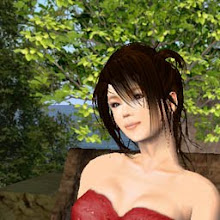Hello.
It's introduction of jumpseed today.
こんにちは。
今日は水引のご紹介です。
Although released as a flower of autumn, it begins to bloom from the start of summer in practice.
秋の花として出しましたが、実は花期が長く秋も咲いているというだけで、実際は夏の初めから咲き出します。
mizuhiki of a name of Japan also has data currently explained to be the name attached since the stalk of the thin flower seemed to be mizubiki.
However, mizuhiki is the name which came from the color of the flower.
As for flower, the upper part is red and the lower part is white.
(Mizubiki is the decoration attached to a present in Japan.
Various colors are properly used by the meaning of a present. )
細い花穂が水引のようだからついた名前であるとされている文献もありますが、水引をよく見れば、花の色から来た名前であろうことは、すぐに想像できます。
花は、上下きれいに、紅白に分かれています。
The leaf is too form without the characteristic. However,
A lot of things which a spot is in can tell the difference with others.
葉はあまり特徴のない形ですが、斑が入っているものが多く、すぐに他のものと見分けがつきます。
There is also a kind of white flower and it is called "silver mizubiki" here.
This is another kind although there is also grass named "golden mizubiki."
白い花の種類もあり、こちらは「銀水引」と呼ばれています。
「金水引」という名前の草もありますが、これは全くの別種です。
水引の説明を英語で探していて、こんなページを見つけたので、ご参考に。
以下このページからの引用です。
クララの八百八町 http://eighthundredandeighttowns.typepad.com/808-towns/
金銀の水引
the gold-coloured mizuhiki is used for weddings. It can also be used for other celebrations such as a new home, but in this case you should put lots of money inside.
赤白の水引
the red-white mizuhiki is used for celebrations in general - most presents are accompanied by red-white mizuhiki. In general for festivities that are welcome to happen more than one.
五色の水引
the five-coloured mizuhiki is used to ward of evil. You can use it to celebrate a birth or the first day at school. You often see five-coloured flags at temples, which is why this mizuhiki is also used for temple festivities or when somebody buys a cemetary plot
黄白の水引
the gold-white mizuhiki are used for Buddhist celebrations, anniversaries of funerals or offerings made to a temple
黒白の水引
black-white mizuhiki are used for funerals
双銀の水引
the silver-mizuhiki is used for funeral money and to pay the buddhist priest for a service performance
金赤の水引
the red-golden mizuhiki is used to pay for shinsatsu or kadomatsu at the shrine
蝶結びは何度でも解き結びなおせますように、つまり、「何度あっても良い」と言った願いが込められている。なので、仏事や結婚で使わないようにしましょう。
Then there's different "ribbons" - the bow knot (cho-musubi) is used for things that "are welcome to happen more than once" - so are not used for funerals and weddings.
出産(子宝に恵まれますように)、入学(何度もさらに上に進学できますように)、お歳暮(来年にも贈れますように)、賞品(何度も賞が獲れますよう に)、昇進(何度も昇進されますように)・・・
the bow knot-type is the mizuhiki for births (to have many children), when entering school (after primary school to get into junior high school, senior high school and eventually university), for seasonal greetings (to send them again next year), for prizes (so you can win again) and for promotions (to be promoted again) etc.
結びきりとは、「繰り返さない」、「一度だけある」という意味で用いられる。結婚祝い(離婚しないように)、快気祝い(再度入院しないように)、香典(葬儀は繰り返さないように)
the musubi-kiri (mostly a simple knot as shown on the right) is for things you don't wish to happen again - so for weddings (you don't want the couple to get a divorce and get married again), for hospital visits (to not get back into hospital) and for funerals (to not have another funeral in the family)
skip to main |
skip to sidebar

Translation
This blog is translated automatically.
About Me

- Mikatsuki
- forest feast is a shop of the fantasy item and the flower. Shop manager is mikatsuki Matova & miki Morigi.
Search this Blog
Link list
Bloglist
-
-
-
-
Wooden Log Raft3 年前
-
-
-
-
-
-
-
-
-
-
-
-
-
-
リニューアル10 年前
-
-
-
-
-
tomoto, rain coat11 年前
-
-
-
-
-
-
-
ありがとうございました。14 年前
-
モテキ14 年前
-
Coming soon...14 年前
-
-
Categories
- Aught (23)
- C-you (1)
- DMCA (5)
- Fairy Mermaid (20)
- Fantasy (72)
- Fantasy Faire (45)
- feast (31)
- Flower (87)
- forest feast (331)
- friend shop (3)
- garden (56)
- gift (42)
- Goth (6)
- HomeGardenExpo (16)
- Hunt (19)
- Hunt Humming Heart (16)
- JaZoo (18)
- Mall (67)
- Move for F of Japan (4)
- petite Avater (18)
- Screen shot (6)
- Zilch (11)
- イベントEvent (127)
- おしらせInformation (187)
- お店紹介 (25)
- カタログ(植物)catalog(p) (182)
- カタログ(植物以外)catalog(i) (36)
- グループGroup (42)
- 景観Landscape (30)
- 制作 (52)
- 日常生活diary (77)
- 日本の花 (30)
CSS byCSS Cream


0 コメント:
コメントを投稿